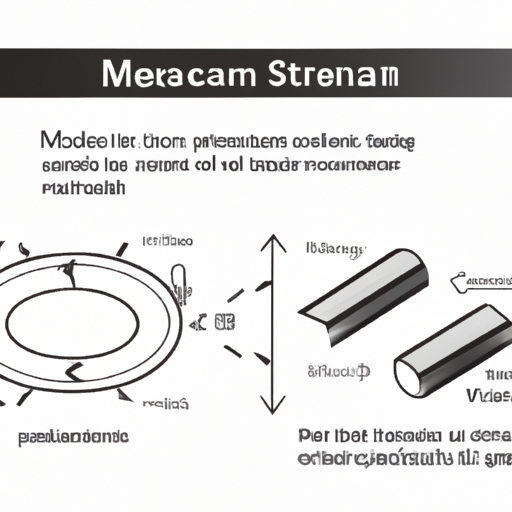Magnetic elements are essential components in a wide range of electronic devices, from hard drives and speakers to medical equipment and electric motors. The production of magnetic elements involves several key steps, each of which is crucial to ensuring the quality and performance of the final product. In this article, we will explore the mainstream production process for magnetic elements, including the materials used, the manufacturing techniques involved, and the quality control measures implemented.

The first step in the production of magnetic elements is the selection of suitable materials. The most commonly used materials for magnetic elements are ferromagnetic metals, such as iron, nickel, and cobalt, as well as their alloys. These materials have the ability to become magnetized when exposed to a magnetic field, making them ideal for use in magnetic elements.
In addition to ferromagnetic metals, other materials are often added to the mix to improve the magnetic properties of the final product. For example, rare earth elements, such as neodymium and samarium, are commonly used in the production of high-performance magnets due to their strong magnetic properties. Other additives, such as boron and aluminum, may also be included to enhance the strength and stability of the magnet.
Manufacturing Techniques for Magnetic Element Production
Once the materials have been selected, the next step in the production process is to shape and magnetize the magnetic elements. There are several manufacturing techniques that can be used to achieve this, depending on the type of magnetic element being produced.
One of the most common manufacturing techniques for magnetic elements is powder metallurgy. In this process, the raw materials are mixed together in powder form and then compacted into the desired shape using a press. The compacted powder is then sintered at high temperatures to bond the particles together and form a solid magnet.
Another popular manufacturing technique for magnetic elements is injection molding. In this process, the raw materials are melted and injected into a mold cavity, where they are allowed to cool and solidify. This method is often used for producing magnets with complex shapes or intricate details.
In addition to powder metallurgy and injection molding, other manufacturing techniques, such as extrusion and machining, may also be used to produce magnetic elements. Each of these techniques has its own advantages and limitations, and the choice of method will depend on the specific requirements of the final product.
Quality Control Measures in Magnetic Element Production
Quality control is a critical aspect of magnetic element production, as even small defects or inconsistencies can have a significant impact on the performance of the final product. To ensure the quality and reliability of magnetic elements, manufacturers implement a range of quality control measures throughout the production process.
One of the key quality control measures in magnetic element production is the use of advanced testing techniques to assess the magnetic properties of the final product. This may include measuring the magnetization curve, coercivity, and remanence of the magnet to ensure that it meets the required specifications.
In addition to testing the magnetic properties of the magnet, manufacturers also conduct visual inspections and dimensional measurements to check for any defects or irregularities in the product. This may involve using techniques such as microscopy, X-ray imaging, and scanning electron microscopy to identify any issues that could affect the performance of the magnet.
Furthermore, manufacturers may also implement process control measures to monitor and optimize the production process. This may involve tracking key process parameters, such as temperature, pressure, and time, to ensure that the magnet is produced consistently and to the required standards.
Overall, the production of magnetic elements is a complex and highly specialized process that requires careful attention to detail and a thorough understanding of the materials and techniques involved. By selecting the right materials, using appropriate manufacturing techniques, and implementing rigorous quality control measures, manufacturers can produce high-quality magnetic elements that meet the demanding requirements of modern electronic devices.